Understanding the Benefits of ABA Therapy for Children with Autism and Other Developmental Disabilities
Exploring the Transformative Impact of ABA Therapy on Developmental Challenges
Introduction to ABA Therapy
Applied Behavior Analysis (ABA) therapy stands as a cornerstone in the therapeutic approach to addressing autism and other developmental disabilities. Esteemed for its methodical and evidence-based framework, ABA therapy focuses on enhancing communication, social skills, and adaptive behavior, offering hope and measurable progress for individuals with developmental challenges. This article delves into the mechanisms, benefits, and broader applications of ABA therapy, showcasing why it is hailed as an essential intervention in this field.
Demystifying ABA Therapy and Its Goals
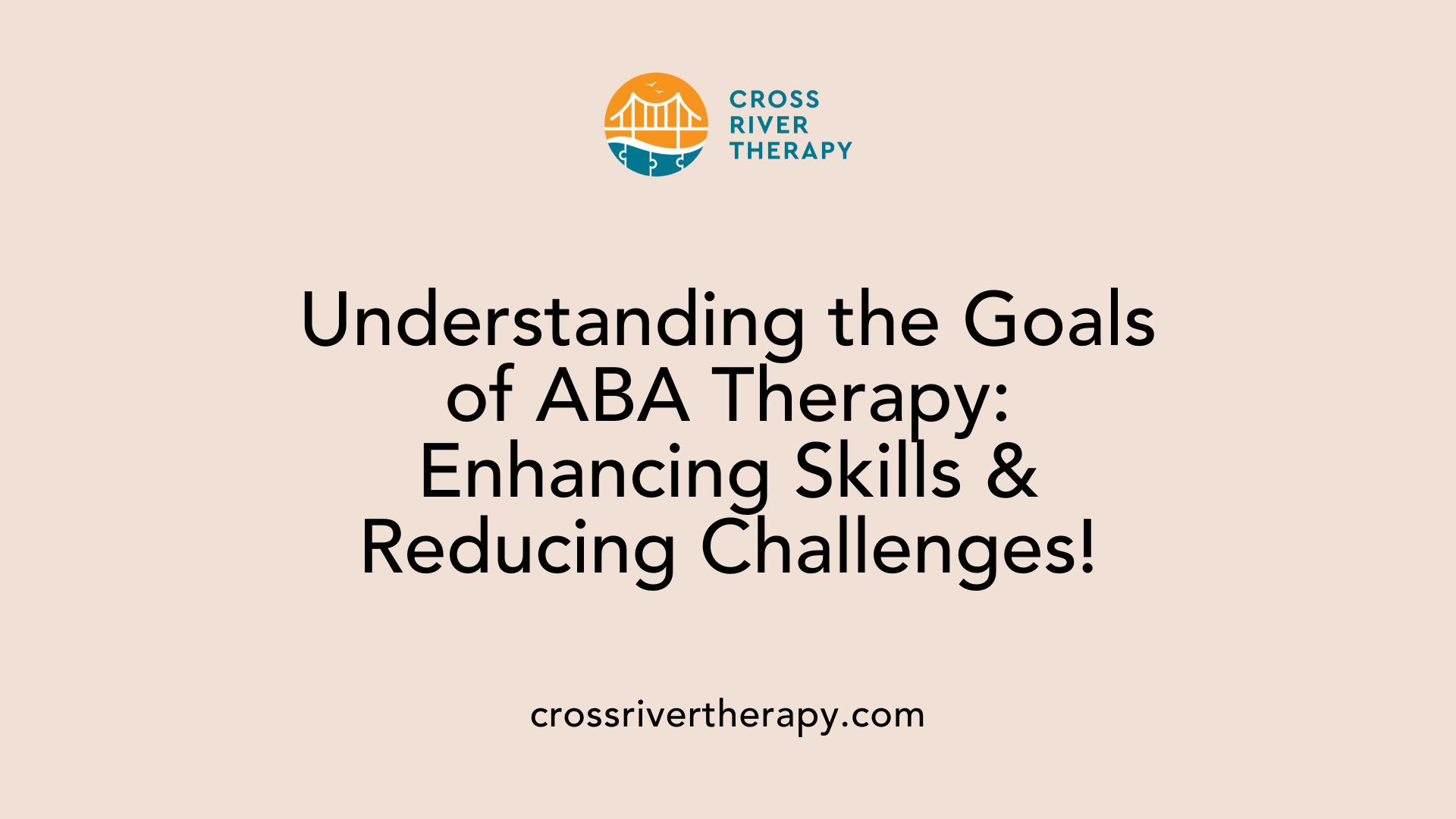
Understanding the Goals of ABA Therapy
The goals of Applied Behavior Analysis (ABA) therapy are focused on enhancing skills and reducing challenging behaviors in children with Autism Spectrum Disorder (ASD). There are three key goals that guide practitioners:
- Description: This involves gathering observable and measurable data about behaviors. Collecting these facts forms the basis for understanding a child's unique patterns, which is essential for developing strategies tailored to their needs.
- Prediction: By analyzing behavior data, therapists can predict potential future behaviors. This helps in understanding how children may behave in various situations based on their past experiences.
- Control: This goal focuses on establishing causal relationships by manipulating independent variables to observe changes in dependent variables. This higher understanding helps in creating effective interventions that lead to improved behaviors.
Exploring Foundational Principles of ABA
ABA therapy is grounded in several fundamental principles:
- Positive Reinforcement: Rewarding desirable behaviors to encourage their repetition, crucial in building good habits and enhancing learning.
- Individualized Plans: Programs tailored to meet the unique needs of each child, ensuring that each session effectively targets their strengths and areas for development.
- Environmental Influence: Recognizing how the environment affects behavior, which is pivotal in crafting strategies that improve social interaction and communication skills.
Through these principles, ABA therapy provides a structured yet adaptable approach, fostering independence and improving overall quality of life for children with autism.
Broadening Horizons: ABA Beyond Autism
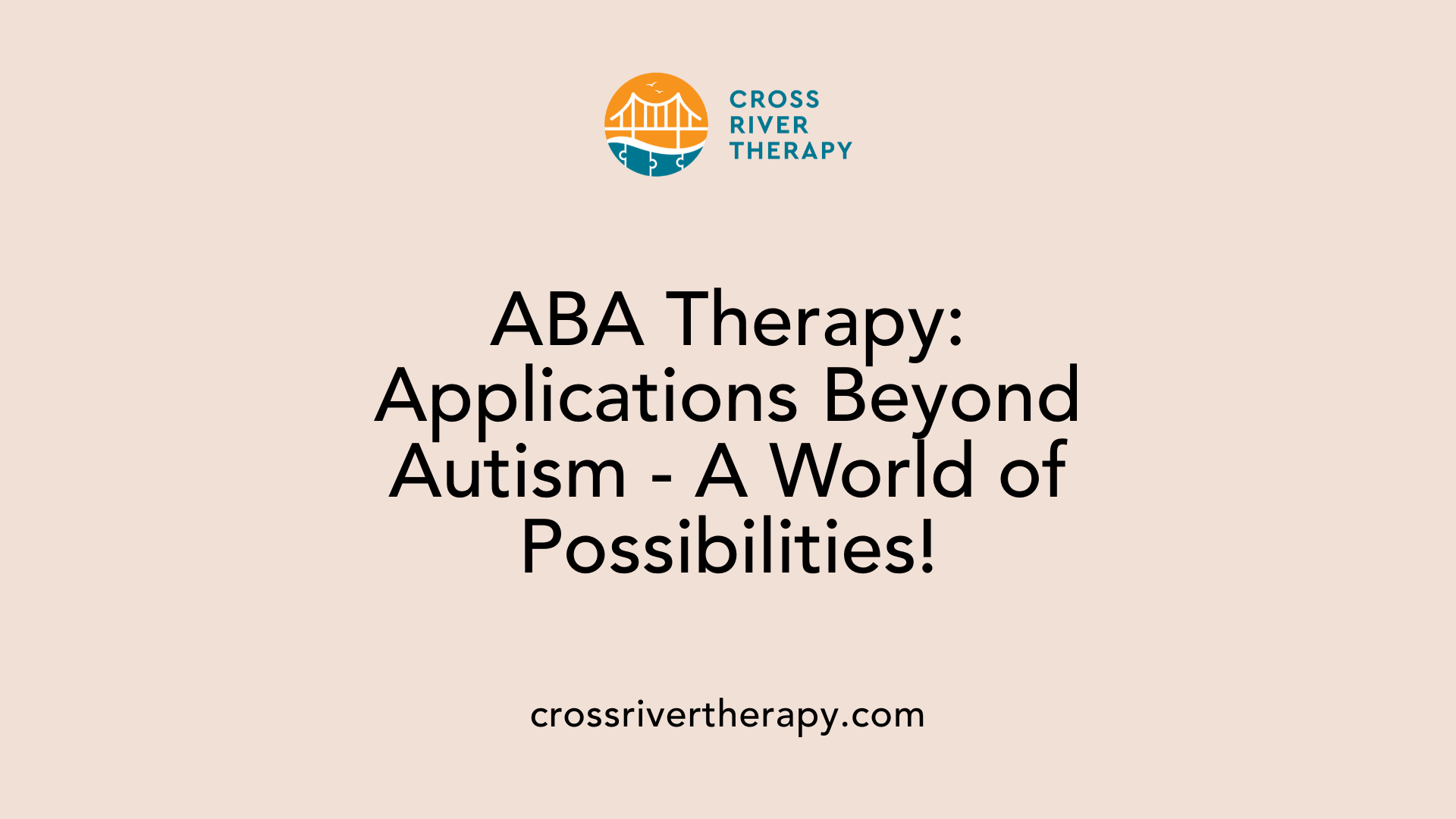
Applications of ABA for Various Conditions
ABA therapy is not limited to individuals with Autism Spectrum Disorder (ASD). Its evidence-based approach applies broadly to various behavioral issues. People with conditions such as Attention Deficit Hyperactivity Disorder (ADHD), Obsessive-Compulsive Disorder (OCD), Post-Traumatic Stress Disorder (PTSD), and even those recovering from traumatic brain injuries can also benefit from ABA. The therapy focuses on increasing helpful behaviors while decreasing harmful ones, encompassing a wide range of skill enhancements such as communication, social interactions, and academic performance.
Benefits of ABA for Different Behavioral Issues
The benefits of ABA therapy extend beyond autism diagnosis. Here are some highlights:
| Condition | ABA Benefits | Mechanism |
|---|---|---|
| ADHD | Improves focus, reduces impulsivity | Positive reinforcement strategies |
| OCD | Reduces compulsive behaviors, teaches coping mechanisms | Identifying triggers and teaching alternative responses |
| PTSD | Aids in managing emotional responses, enhances coping skills | ABA supports self-regulation |
| Traumatic Brain Injury | Helps in skill rehabilitation and social skills improvement | Customized objectives based on individual needs |
While ABA is widely recognized for its role in treating autism, its versatility means individuals do not need an autism diagnosis to access its benefits. Each ABA program can be customized to meet individual needs, making it an ideal solution for a variety of developmental and behavioral challenges, thus enhancing overall quality of life.
The Core Benefits of ABA Therapy for Autism
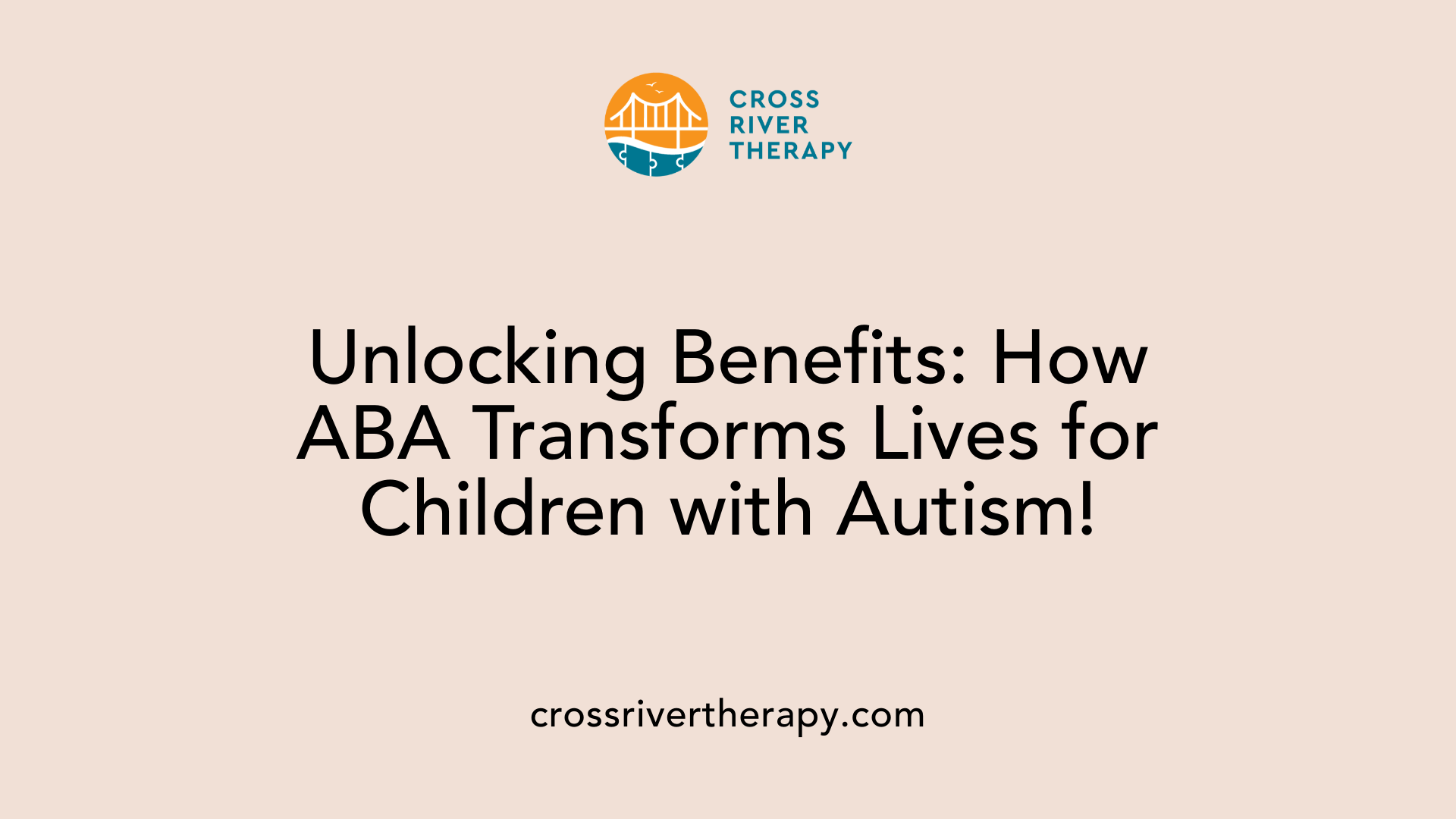
What are the benefits of ABA for autism?
Applied Behavior Analysis (ABA) therapy offers numerous benefits for children with autism. Here are some essential improvements that ABA can foster:
- Enhanced Communication Skills: ABA therapy helps develop crucial language abilities, allowing children to express their needs effectively. Techniques such as visual aids and step-by-step learning are employed, significantly increasing expressive language capabilities.
- Improved Social Interactions: Through structured group activities and role-playing, ABA teaches appropriate social behaviors like turn-taking, greetings, and making friends, thereby facilitating better peer relationships.
- Increased Independence: The focus on critical life skills within ABA helps children learn daily routines, including personal hygiene and dressing, promoting self-reliance and confidence.
- Reduced Problem Behaviors: ABA identifies triggers for challenging behaviors, teaching children adaptive actions instead and fostering a safer environment for learning.
- Positive Behavioral Changes: By utilizing positive reinforcement, children are motivated to repeat desirable behaviors, enhancing their engagement and focus during activities.
Importance of personalized ABA plans
The effectiveness of ABA lies in its personalized approach. Each program is crafted to meet the unique needs of the child, based on assessments by Board Certified Behavior Analysts (BCBAs). Personalized plans allow for ongoing progress tracking and adaptation, ensuring strategies align with the child’s developing strengths and challenges. This tailored strategy not only aids in critical skill acquisition but also provides parents with the support and resources needed to reinforce positive behaviors at home, making ABA a comprehensive solution to improving the lives of children with autism.
Methodologies and Techniques in ABA Therapy
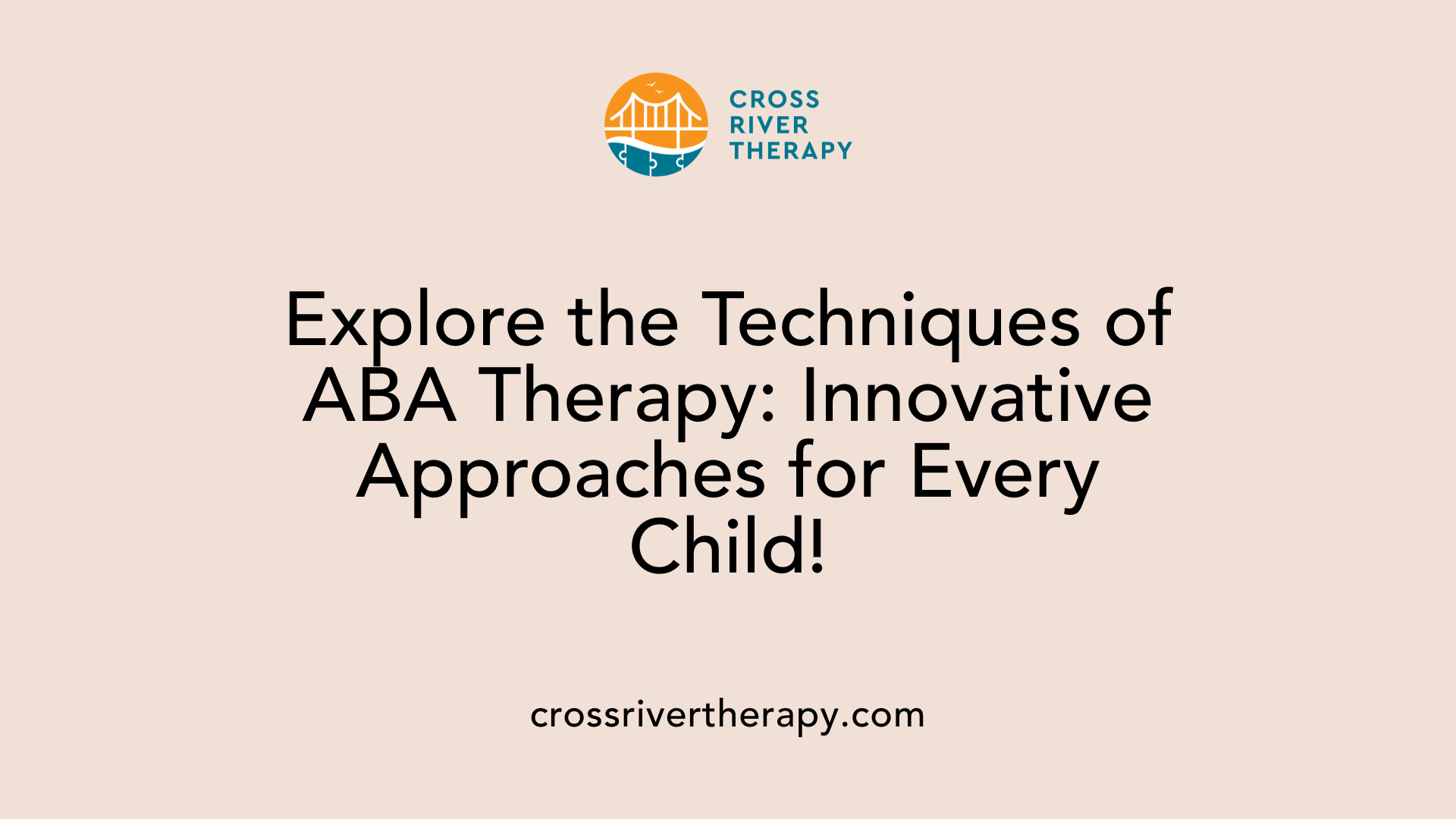
What techniques are used in ABA therapy?
ABA therapy employs a variety of techniques to effectively modify behaviors. Some of the most utilized strategies include:
- Discrete Trial Training (DTT): This method breaks down skills into small, manageable steps, allowing for focused teaching and assessment.
- Natural Environment Teaching (NET): Focusing on real-life situations, NET helps to enhance the generalization of skills learned in structured environments.
- Positive Reinforcement: Essential to ABA, this technique encourages desirable behaviors by rewarding their occurrence, making it more likely they will be repeated.
- Prompting and Fading: This duo helps guide the child toward the desired behavior and then gradually reduces the prompts as the child becomes more independent.
- Video Modeling: Demonstrating appropriate behavior through videos, allowing children to observe and learn from modeled interactions.
- Functional Communication Training: Specifically aims to replace challenging behaviors with more acceptable forms of communication.
- Social Stories: These narratives help children understand social cues and appropriate interactions in various settings.
How does ABA therapy adapt to individual needs?
Each ABA program is customized to suit the unique strengths and challenges of the child. This individualization involves thorough assessments conducted by a Board Certified Behavior Analyst (BCBA), ensuring that strategies align with the child's developmental goals. The ongoing evaluation of progress allows for adjustments in techniques and goals as the child develops, thereby fostering an environment where they can thrive and learn effectively at their own pace.
By tailoring these methodologies, ABA therapy not only promotes skill acquisition but also improves the overall quality of life for children with autism, enhancing their communication, social interaction, and daily living skills.
Addressing Emotional Regulation with ABA
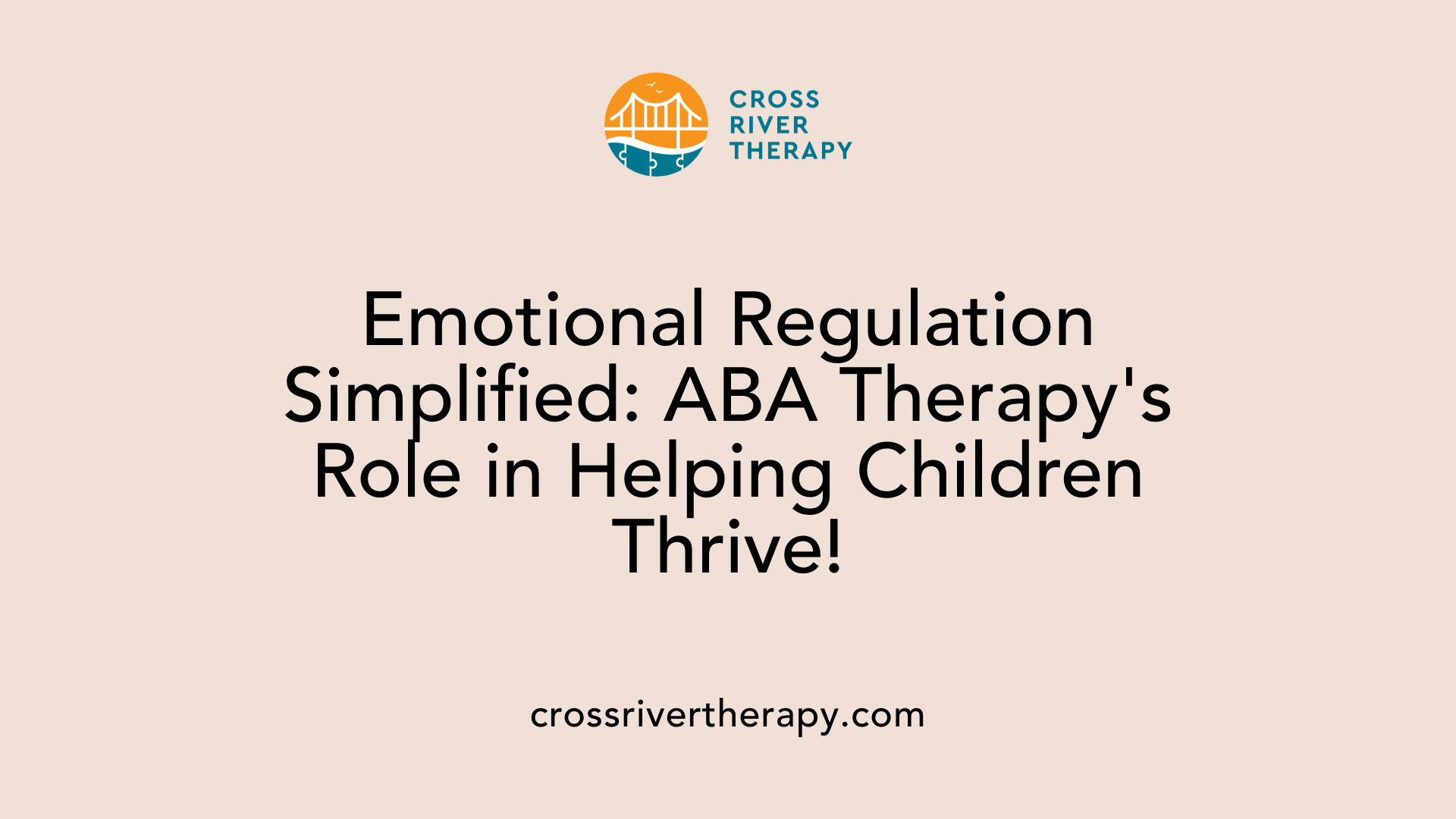
How does ABA help with emotional regulation?
ABA therapy significantly aids emotional regulation by enabling children to recognize and manage their emotions. By utilizing structured exercises and therapeutic activities, children can learn healthier ways to express feelings, leading to reduced distress and maladaptive behaviors.
Through consistent practice within ABA sessions, children engage in activities that promote physical health, such as games that require sharing or taking turns, which also enhance social skills. This active play environment fosters communication capabilities, essential for navigating social interactions.
Moreover, the incorporation of exercise into ABA has been shown to support cognitive functions and attention control. This is particularly beneficial for children who exhibit symptoms of ADHD, as it aids in improving focus and impulse control.
Ultimately, by promoting body awareness and teaching skills like negotiation and self-advocacy, ABA therapy equips children with crucial tools for effective emotional expression, contributing to their overall emotional well-being.
Benefits for children in handling emotions better
The benefits of ABA therapy extend beyond behavioral improvements. Children learn to articulate their feelings, enhancing their ability to participate in social situations confidently.
This holistic approach not only supports emotional regulation but also empowers children to foster meaningful relationships and develop the independence needed for adult life.
Early Intervention and its Long-term Impact
Importance of starting ABA early
Starting Applied Behavior Analysis (ABA) therapy at an early age is essential for children with Autism Spectrum Disorder (ASD). Early intervention capitalizes on the brain's plasticity during critical developmental periods, allowing children to learn essential skills more effectively. Evidence suggests that the earlier a child begins ABA therapy, the more likely they are to experience significant improvements in communication, social interaction, and adaptive behaviors. This is particularly crucial in addressing communication delays and minimizing challenging behaviors that often arise in autistic children.
In addition, intensive ABA programs—ranging from 25 to 40 hours per week—have shown the capacity to enhance intellectual functioning and social skills over time. Individualized treatment plans ensure that specific needs are met, making it easier for children to learn at their own pace and comfort level.
Long-term benefits of early ABA therapy
The benefits of early ABA intervention extend far beyond immediate improvements. Studies have indicated that children who participate in extensive ABA therapy often transition successfully into mainstream educational settings due to their enhanced communication and social skills. These benefits help children cultivate friendships and navigate social cues more effectively, fostering independence as they grow.
Counting on positive reinforcement techniques, ABA therapy equips children with vital life skills, enabling them to manage their behaviors in various environments, from home to school. The skills learned through early ABA interventions contribute significantly to long-term success by preparing children for adulthood—ensuring they possess the confidence and ability to navigate life's challenges independently.
Why use ABA therapy for children with autism?
Applied Behavior Analysis (ABA) therapy is widely recognized as the gold standard treatment for children with Autism Spectrum Disorder (ASD) because it effectively improves essential skills in social interaction, communication, and learning through structured, evidence-based methods. ABA therapy is individualized, meaning that programs are tailored to meet the unique needs of each child, which is crucial since children with autism may learn differently compared to their peers. Early intervention with ABA can lead to significantly better outcomes, optimizing the child's ability to function in various environments. The therapy emphasizes positive reinforcement, breaking skills into manageable steps, and reducing negative behaviors, which helps children gain independence in daily activities. Overall, ABA creates structured, distraction-free learning environments that support children in achieving substantial and lasting improvements.
Addressing Controversies and Ensuring Safe Practice
Addressing Criticisms and Misconceptions About ABA
ABA therapy has its share of controversies. Supporters advocate for its ability to enhance communication, daily living skills, and social interaction in children with autism spectrum disorder (ASD). Yet, critics often express concerns about the potential emotional harm it may cause. They argue that if ABA therapy emphasizes compliance over individuality, it can inadvertently reinforce negative perceptions of autistic behaviors, leading to stress and trauma for children.
Is ABA Therapy Harmful?
The effectiveness and safety of ABA therapy can vary significantly based on its implementation. Modern ABA practices are increasingly founded on positive reinforcement strategies, which prioritize the child's unique needs and individuality. This shift intends to alleviate the worries surrounding previous punitive methods. Ultimately, the therapy's impact on an individual child is highly contingent on how it is administered, ensuring that ethical standards and respect for each child's characteristics guide practice.
Ensuring Ethical and Child-Centered Practice
In light of these concerns, it's crucial that ABA therapy remains focused on ethical, individualized approaches. Having a Board Certified Behavior Analyst (BCBA) oversee therapy sessions ensures that methods are tailored, data-driven, and focused on enhancing the quality of life for children with ASD. Continuous training for caregivers is also essential to maintain a positive environment that reinforces desirable behaviors without compromising the child's emotional well-being.
| Topics Covered | Key Points | Implications |
|---|---|---|
| Criticisms of ABA | Potential emotional harm and negative behavior reinforcement | Caution advised; approach must be tailored |
| Implementation and Safety | Focus on positive reinforcement and ethical practices | Improved outcomes when administered with care |
| Role of BCBA | Personalized treatment plans and ongoing assessments | Higher quality and targeted interventions |
The Role of Qualified Analysts in ABA
Importance of BCBA in ABA programs
The Board Certified Behavior Analyst (BCBA) plays a crucial role in the success of Applied Behavior Analysis (ABA) therapy. They are responsible for conducting thorough assessments of children with autism to identify their specific behavioral needs. This expertise ensures that every ABA program is anchored in data, allowing the BCBA to monitor progress and modify strategies as necessary. This professional oversight helps achieve optimal outcomes, particularly in critical areas such as communication, social skills, and daily living skills.
Creating effective individualized treatment plans
BCBAs are tasked with developing individualized treatment plans tailored to each child’s unique strengths and challenges. Using evidence-based methodologies, they design interventions that incorporate positive reinforcement and structured learning environments. These plans are dynamic and adaptable, evolving as the child progresses, which is vital for fostering long-term growth. Through ongoing assessment and adjustment, therapy sessions remain impactful and aligned with the child's developmental goals.
Parental Involvement and Support Systems in ABA
Training and Empowering Parents in ABA
Parental involvement is crucial for the success of Applied Behavior Analysis (ABA) therapy. Training parents on ABA techniques empowers them to implement strategies effectively at home. This training ensures continuity in a child’s development and reinforces the skills learned during therapy sessions. Parents become active participants in their child’s learning process, which enhances the overall effectiveness of the intervention.
Benefits of a Cohesive Home-Therapy Connection
A strong home-therapy connection provides several benefits. Consistency is key in ABA therapy; when parents apply the same strategies as therapists, it helps children generalize their skills across different environments. This cohesive approach leads to improved communication, social skills, and daily living skills. Research shows that when parents are trained and supported in their roles, children experience enhanced progress and better emotional regulation, ultimately fostering greater independence as they grow.
In conclusion, a nurturing and well-informed parental role significantly influences the effectiveness of ABA therapy, steering children toward successful outcomes.
Conclusion: The Future of ABA Therapy
The landscape of Applied Behavior Analysis (ABA) therapy is continuously evolving, underscoring its flexibility and relevance in treating diverse developmental conditions beyond autism. By leveraging a robust scientific approach, ABA therapy not only improves communication, social, and adaptive skills but also empowers individuals to lead fulfilling lives. As parents, therapists, and educators navigate the complexities of developmental disabilities, ABA emerges as a pivotal tool in building better futures for children. In appreciating its advancements and addressing its challenges, ABA therapy can continue to serve as a beacon of hope and progress for countless families worldwide.
References
- Applied Behavior Analysis (ABA) | Autism Speaks
- 6 Life-Changing Benefits of ABA Therapy for Children with Autism
- Benefits of ABA Therapy for Children with Autism
- The Top 10 Reasons Children With Autism Deserve ABA - PMC
- Understanding ABA Therapy: Benefits for Children with Autism
- Understanding ABA ASD: Key Benefits for Autism Treatment
- The Benefits Of ABA Therapy for Autism



